Introduction
This blog discusses how service quotation can be configured and processed in S/4HANA Service with Advance execution item for an itemized billing relevance scenario.
Use case:
Resource Related Quotation with the itemized billing relevance, is the business expectation with Service Quotation processing for Advance Execution Item in S/4HANA. Here the repair planning has to be supported through Maintenance Order planning.
Service Quotation processing for Advance Execution Item with Billing relevance = Itemized Billing
The process is initiated with Advance Execution Item in the S/4HANA Service Quotation triggering creation of linked Maintenance order. Based on the service requirement of customer, operations and components will be planned in the maintenance order and planned data will drive the determination of dynamic line items in the service quotation.
They will be automatically added as sub items to the main item of service quotation. The dynamic line items can determine price either based on price master data or on cost plus % uplift principle.
Proposed Item category of AEI line (Main Item) is statistical item category.
Proposed Item category of Sub Items (which are the dynamically determined items) is non statistical item category.
The net value of Advance Execution item (AEI) (aka main item) in Service Quotation will show a statistical value. This is the sum of net value of the sub items (aka dynamic line items) under SD condition type KUMU. This has to be part of pricing procedure.
The planned cost of AEI line (main item) will show the sum of planned cost of all dynamic line items.
Main Item & Sub Items (AEI and Dynamic Items in service quotation)
The main item category will be statistical and this line value will not update price value at the header level of service quotation.
It can support a Time & Material based quote offering considering the net value of dynamic items and applicable tax for each of the line. The sub items are nonstatistical in this case.
Dynamic items which are normally the spare part, labour items relevant for repair and they are identified with a material master code. They can have a price master or can be priced on cost plus % uplift basis.
Here the standard SD condition type KUMU can capture the net value of the sub items. And it is placed very next to Net Item value in the pricing procedure.
It should be understood the sum of net value of sub items (ie., dynamic line items) can be reflected in the main item. But the total tax value of sub items cannot be equal to tax determination at the main item level.
The quote output form can be customized to show the price / tax from the sub items detail lines and the statistical main item.
Key configurations:
1. Item category – statistical with billing relevance = G and DIP profile value.
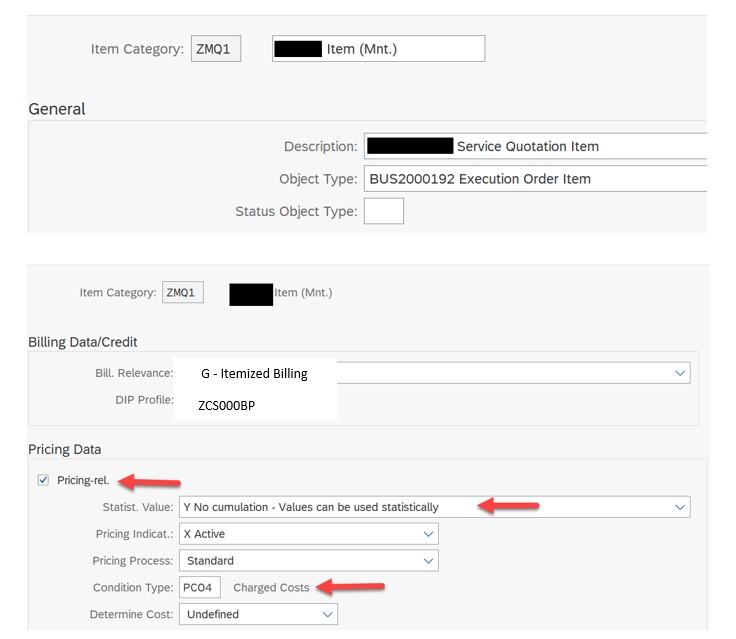
2. Item category – Non statistical
(this will be relevant for dynamic line item of the nature of labour)
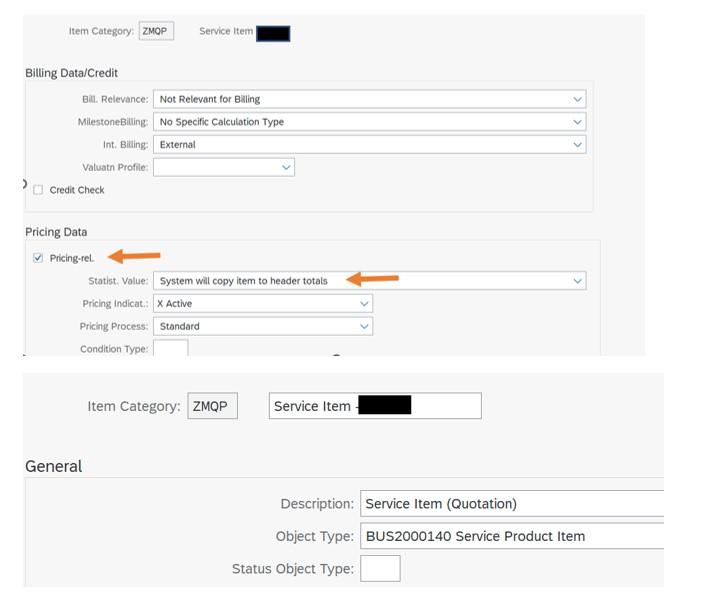
(this will be relevant for dynamic line item of the nature of spare part)
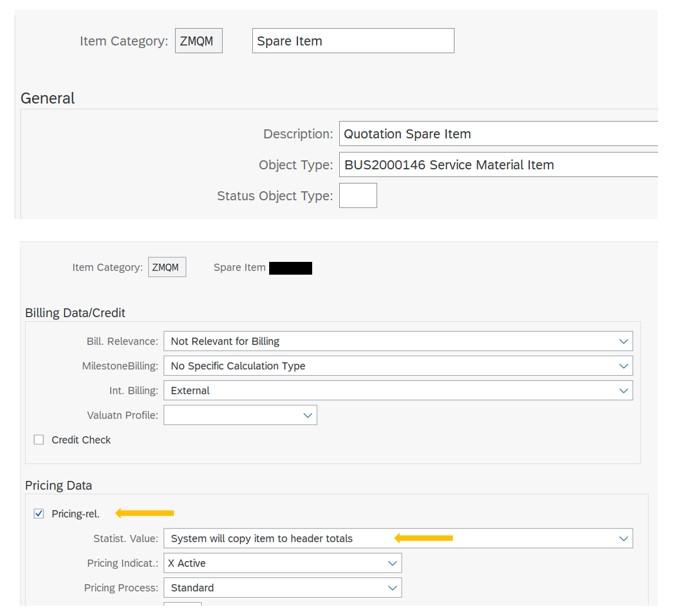

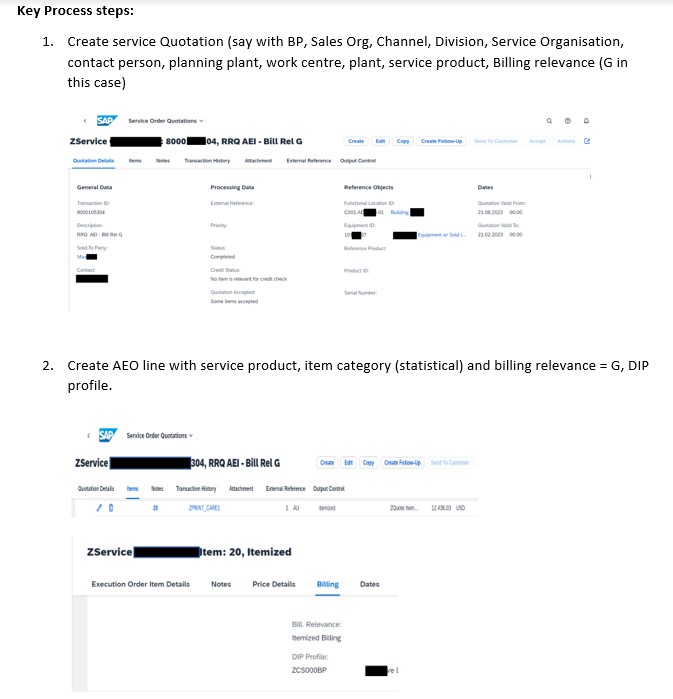
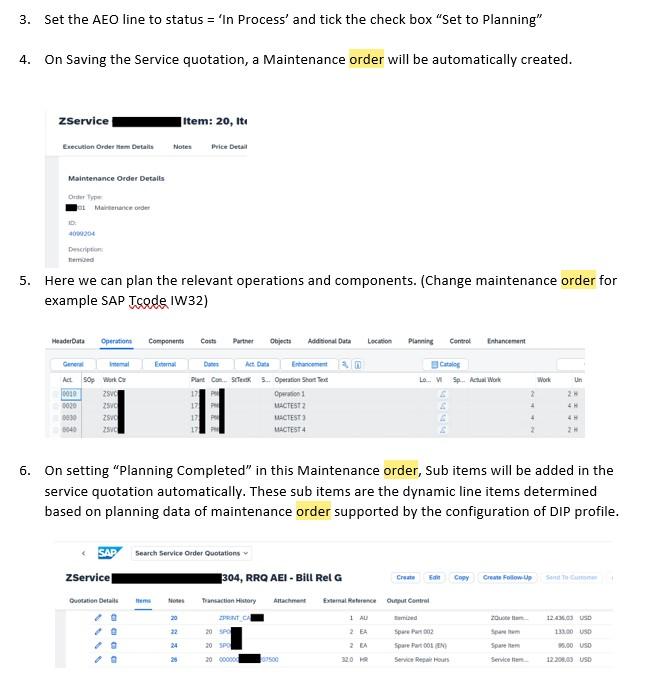
7. The plan cost data for the individual sub items will be based on the planned cost data of Maintenance order and all these planned costs will be summed up and shown at main item level.
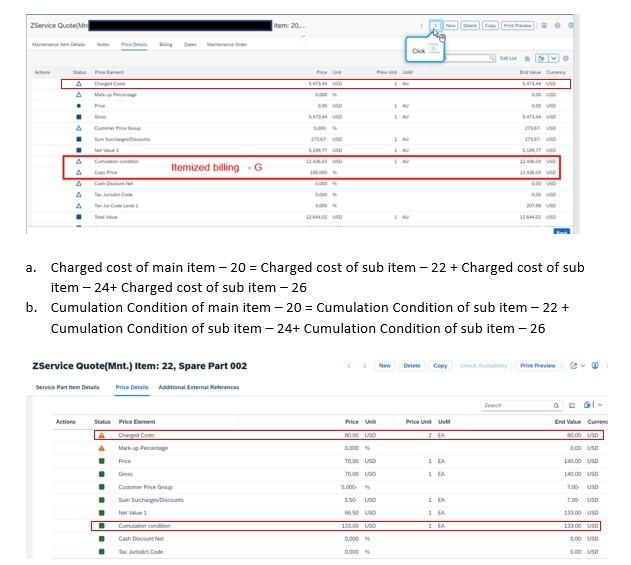
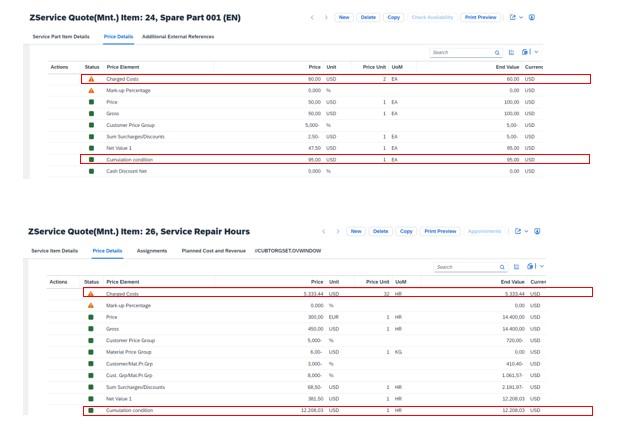
The service quotation will be reviewed and sent to customer for approval. The agreed billing variant will be maintained in the service quotation line and carried forward to the next process step.
Follow up to Service Quotation
On approval from customer, service order will be created as a follow up process. The same Maintenance order will be linked to AEO item of Service order and continue to support further planning and execution of the service order.









